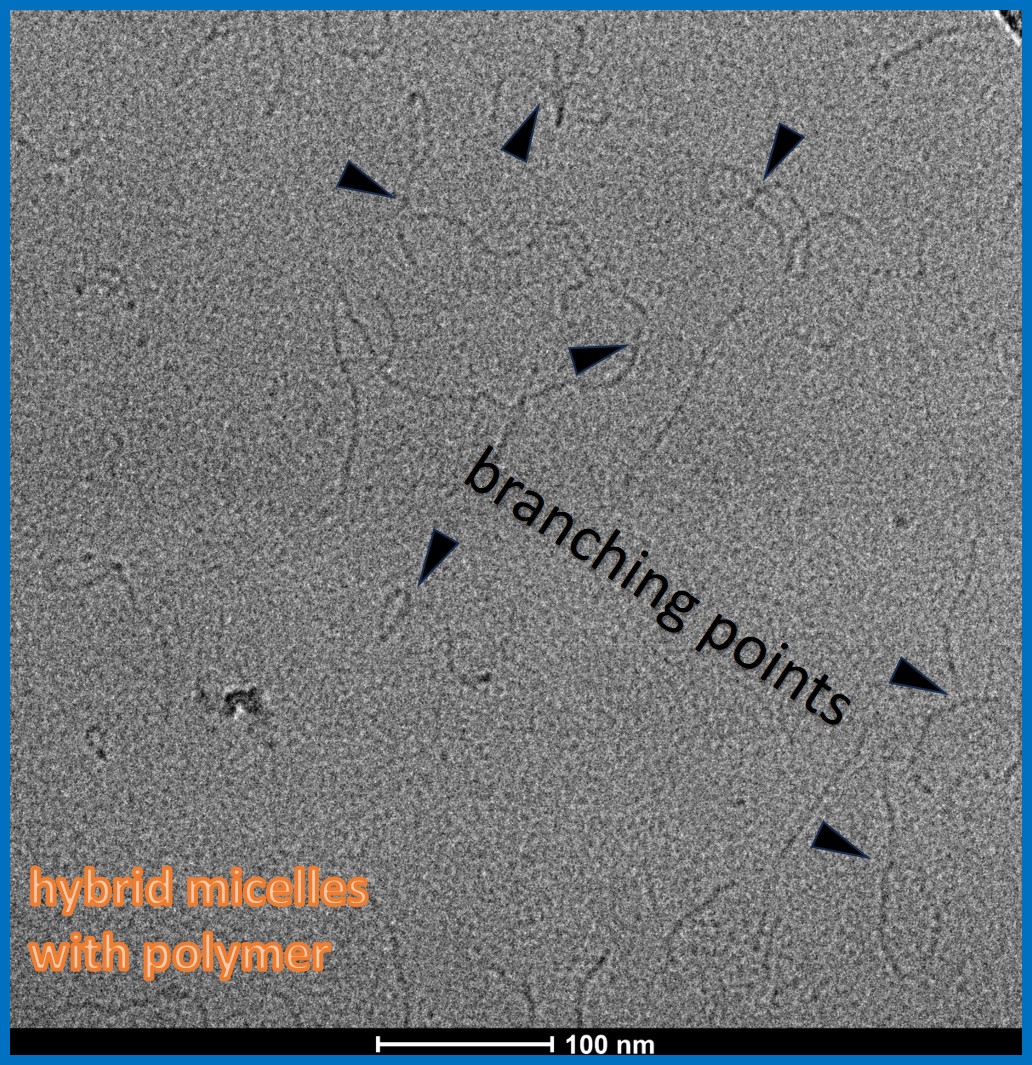Detecting Shape of Hybrid Polymer/Surfactant Micelles: Cryo-Transmission Electron Microscopy, Small-Angle Neutron Scattering and Dynamic Light Scattering Study
DOI:
https://doi.org/10.31489/2959-0663/2-24-13Keywords:
polymer/surfactant complexes, hybrid micelles, ionic surfactant, polymer-surfactant interactions, rodlike micelles, branching points, cryo-TEM, SANS, DLSAbstract
In-depth study of shape of hybrid micelles in the micellar solutions of anionic surfactant potassium oleate, containing hydrophobic polymer poly(4-vinylpyridine) (P4VP) was conducted via cryo-transmission electron microscopy (cryo-TEM), small-angle neutron scattering (SANS) and dynamic-light scattering of visible light (DLS). Direct visualization of the solutions with cryo-TEM evidenced the coexistence of polymer-free spherical micelles and branched rodlike hybrid micelles with mean length of 200 nm and radius of 2 nm, governed by contour length of solubilized P4VP and length of hydrophobic “tail” of potassium oleate, respectively. The formation of branches in the hybrid micelles was explained by attaching the thermodynamically unfavorable end-caps of micelles to their polymer-loaded cylindrical fragments. By SANS it was shown that the cylindrical local shape and the radius of the micelles are independent of the concentration of embedded P4VP. Relaxation processes in the solutions were investigated with DLS. Three relaxation modes were observed for hybrid micelles, similar to polymer-free wormlike micelles. Fast and medium relaxation modes were attributed to diffusion of entangled micellar chains and their segments, respectively. The slow mode was related to electrostatic repulsion between similarly charged hybrid micelles.

Downloads
Published
How to Cite
Issue
Section
License
Copyright (c) 2024 Alexander L. Kwiatkowski, Vyacheslav S. Molchanov, Anton S. Orekhov, Alexander I. Kuklin, Olga E. Philippova

This work is licensed under a Creative Commons Attribution-NonCommercial-NoDerivatives 4.0 International License.
This work is licensed under a Creative Commons Attribution-NonCommercial-NoDerivatives 4.0 International License.
Authors retain copyright and grant the journal right of first publication with the work simultaneously licensed under a Creative Commons Attribution License (CC BY-NC-ND 4.0) that allows others to share the work with an acknowledgement of the work's authorship and initial publication in this journal.



